Peters Contemporary Library
BROWN
Syntagm III for Ensemble Score

EARLE BROWN Score Syntagm III for Ensemble
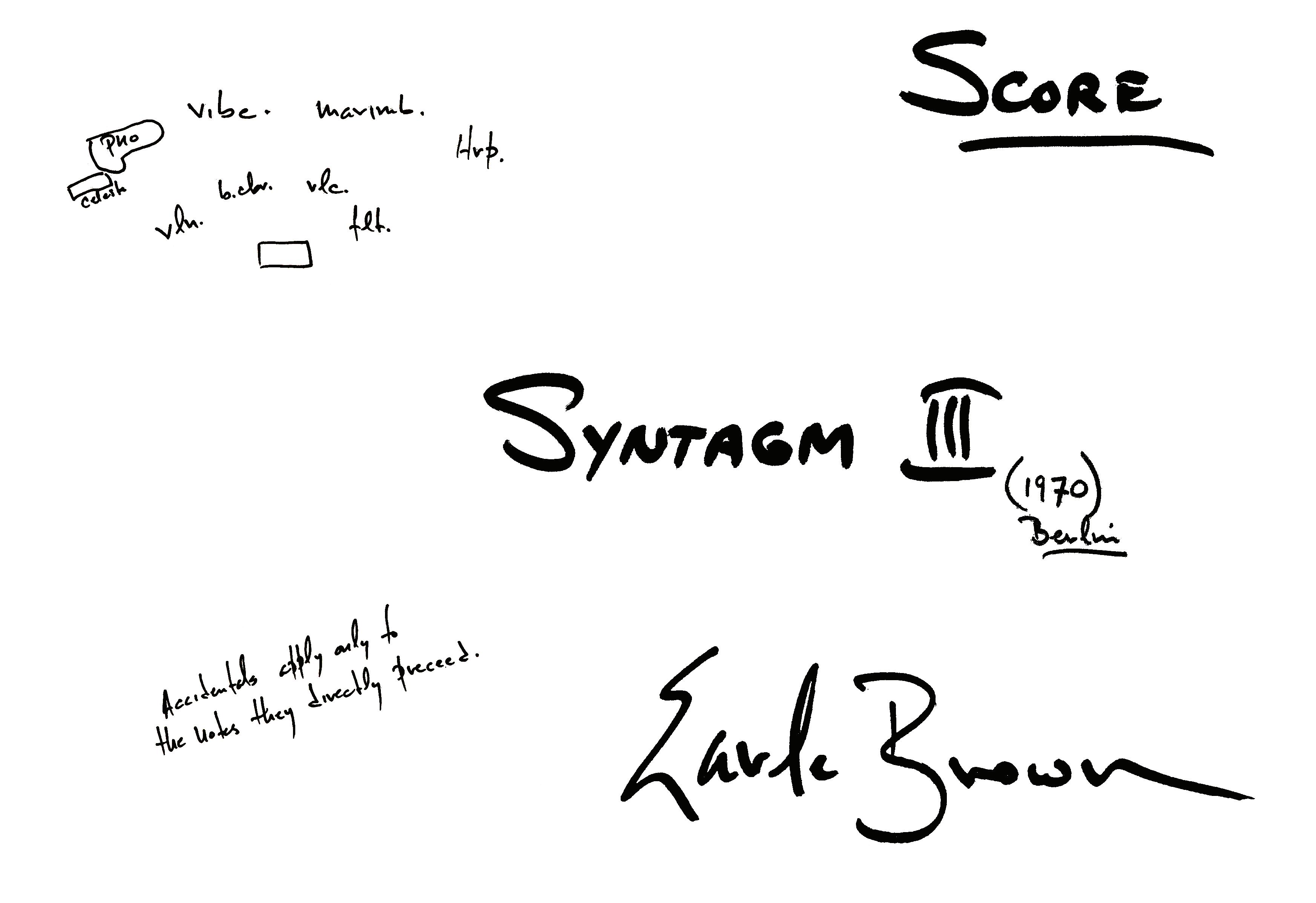

Earle Brown
SYNTAGM III
(1970)
Commissioned by Fondation Maeght syntagm III premiered at Fondation Maeght, Saint-Paul-de-Vence, France, 20 July 1970
Ensemble: Domaine Musical
Conductor: Lukas Foss
Score (transposed)
Instrumentation
Flute Bass Clarinet
Piano / Celeste
Harp
Vibraphone
Marimba
Violin
Violoncello
Duration: approximately 12 minutes
Accidentals apply only to the notes they directly preceed.
Program Note
SYNTAGM III is an extension of my early graphic, improvisational scores such as SYNERGY I and DECEMBER 1952 [both from FOLIO ( 1954 )] in combination with aspects of open form ( TWENTY-FIVE PAGES ( 1953 )) and more recent scores such as SYNERGY II in which I have combined all of these “experimental” scoring and performance techniques. SYNTAGM III is a further attempt to create relevant and responsible aspects of my function as a composer and an optimistic attitude toward performance spontaneity . . a kind of “programmed environment” of composer-performance collaboration. This is very close to the definition of “synergy” as I worked with the concept in 1952 . Recent developments are encouraging, finally.
Earle Brown
SYNTAGM III (1970)
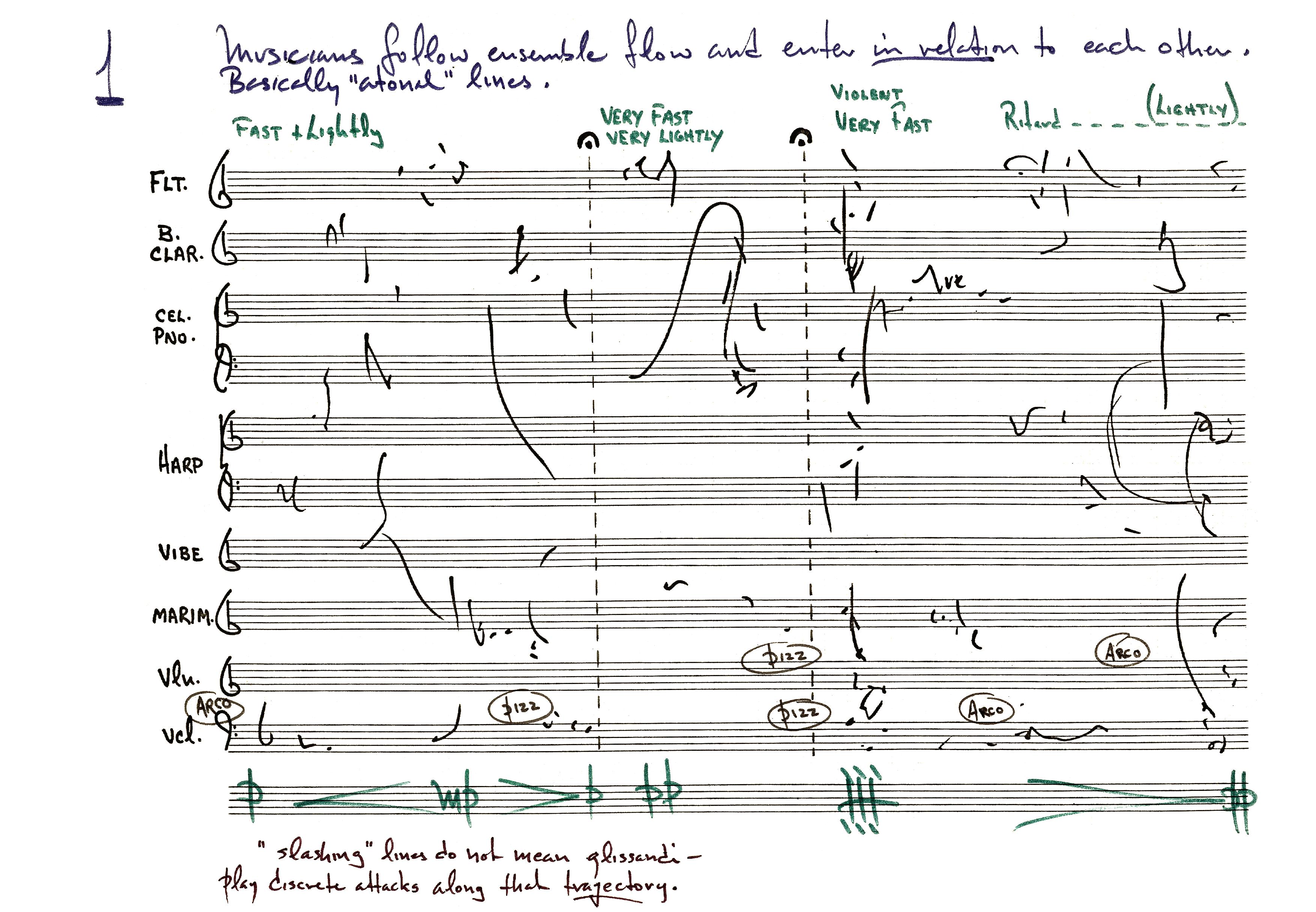
Edition Peters 11144


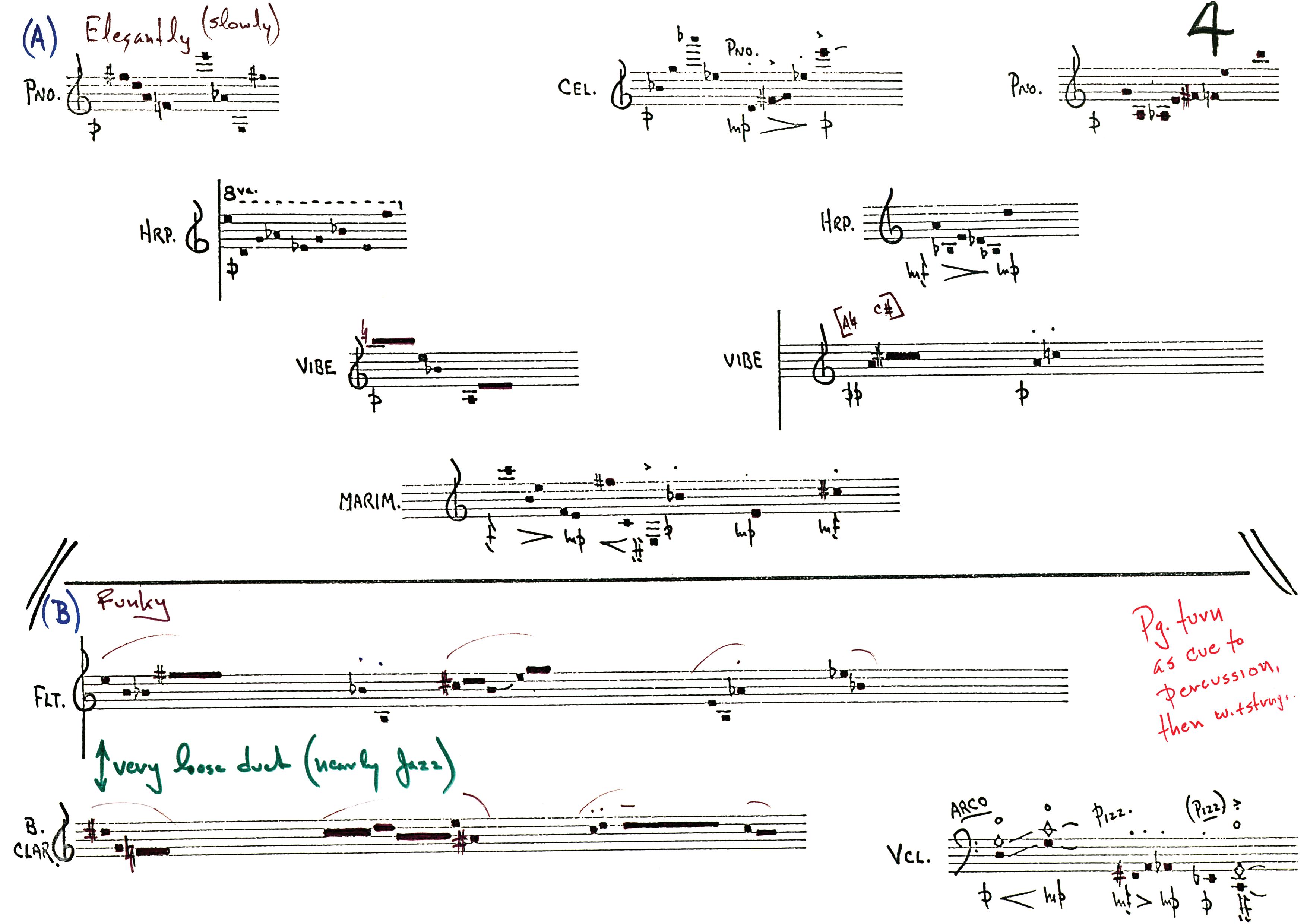
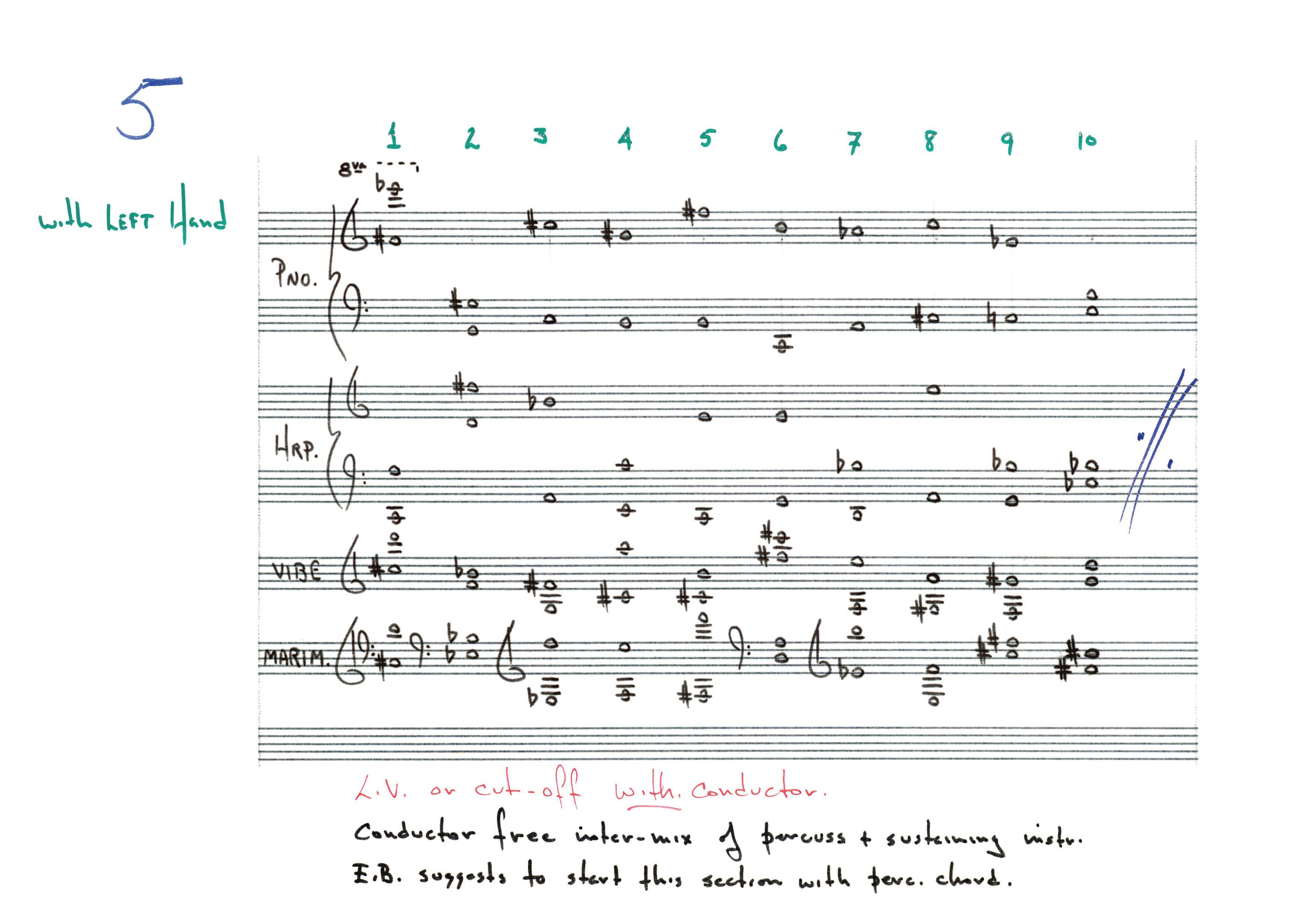
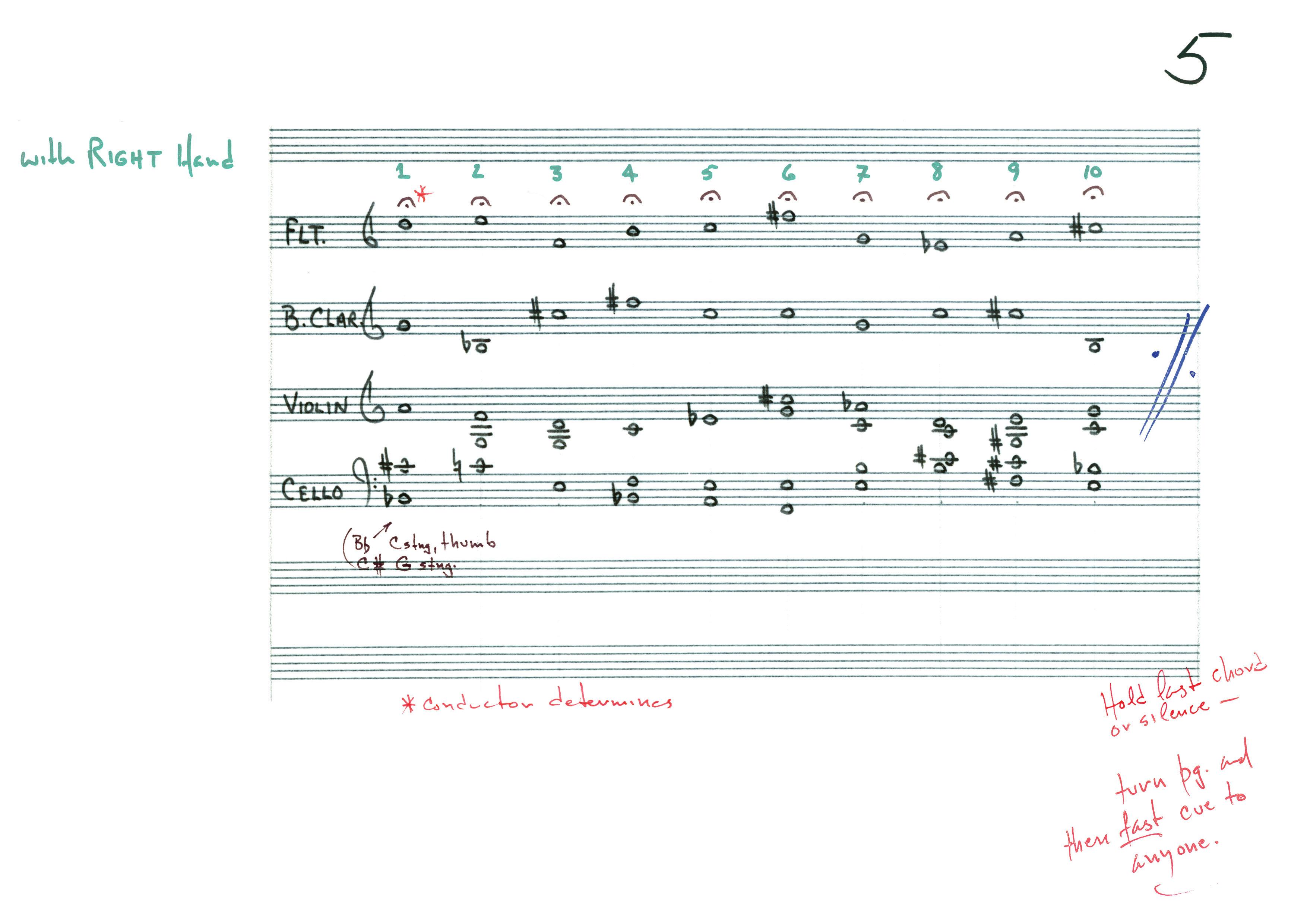
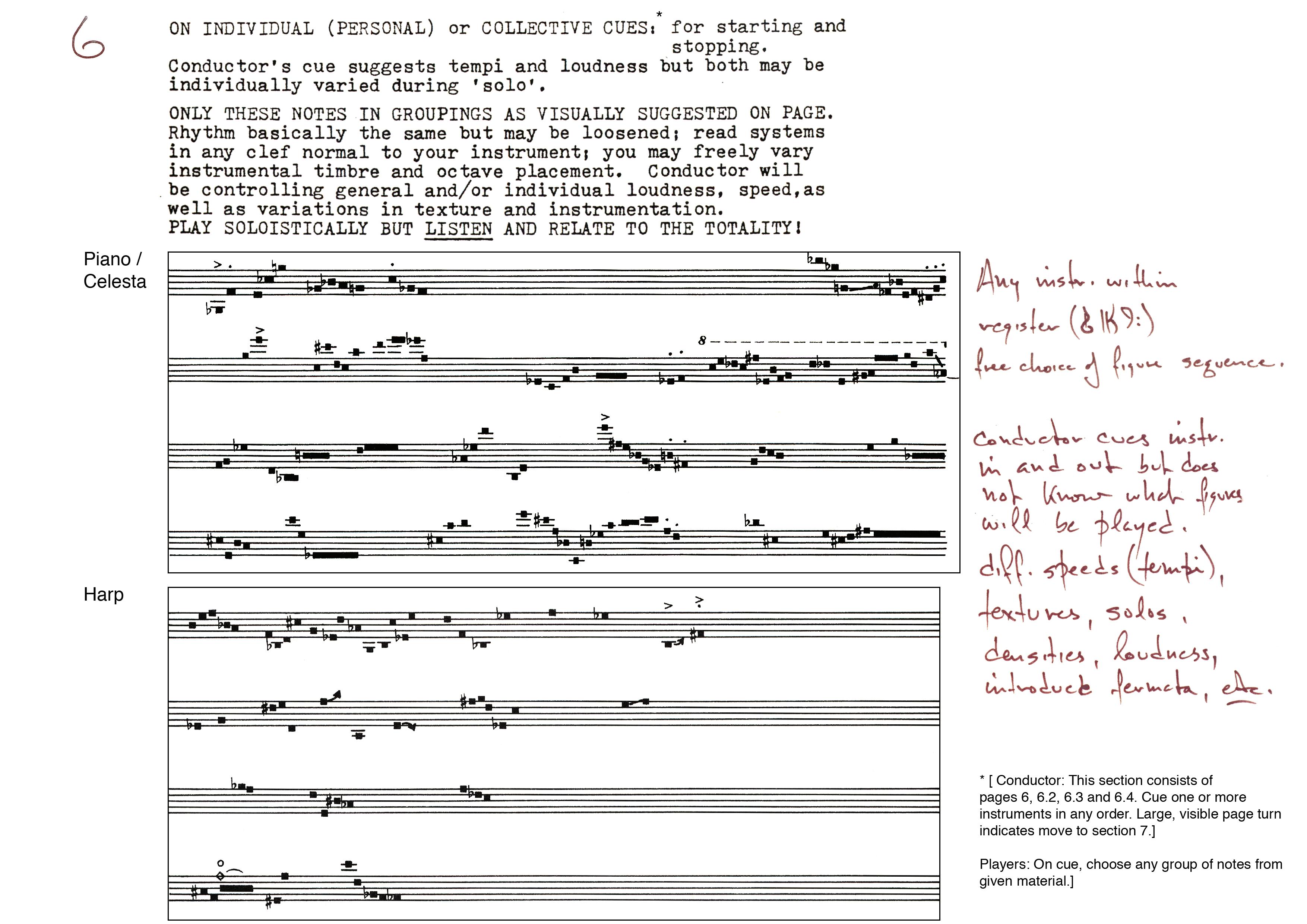
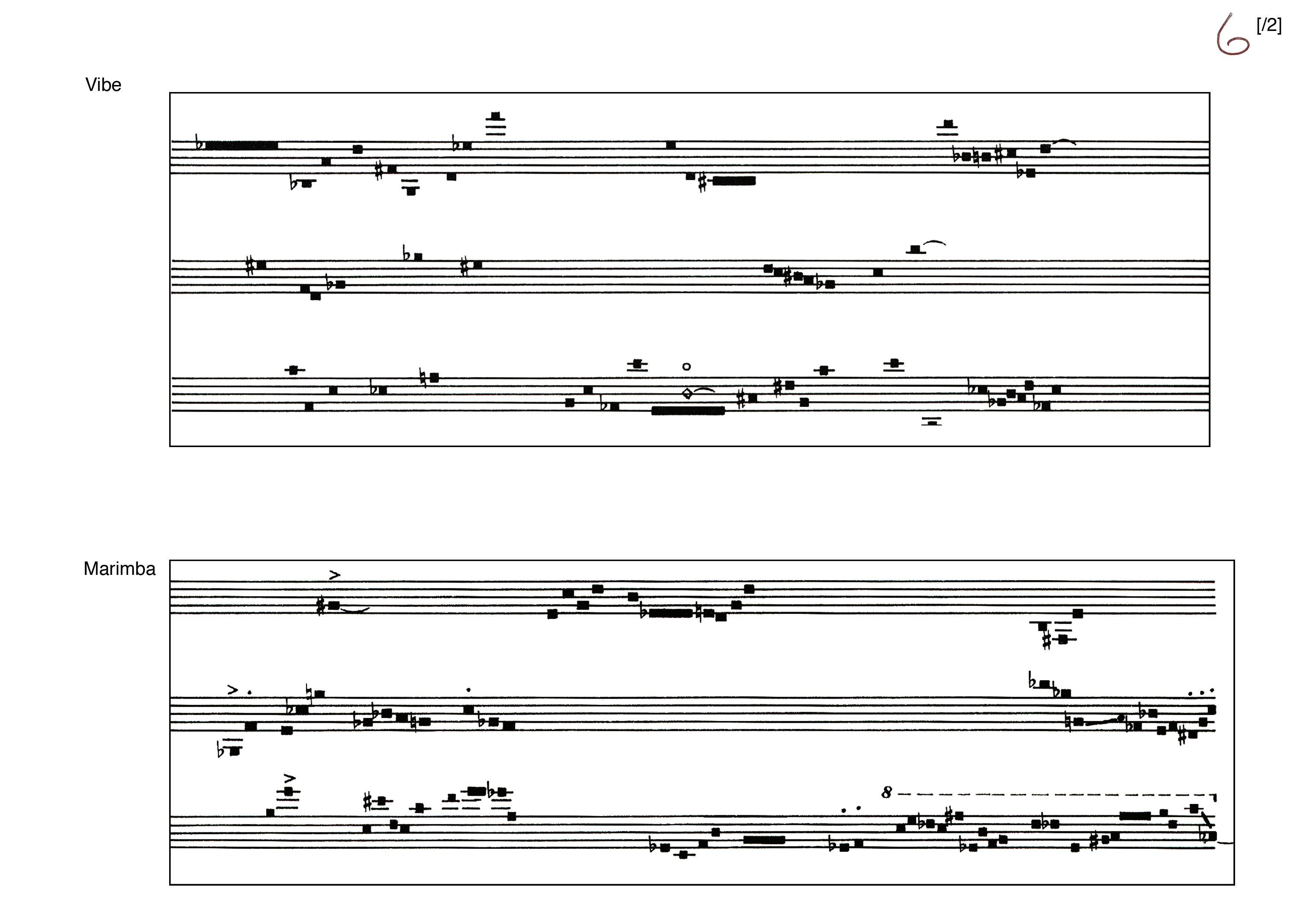
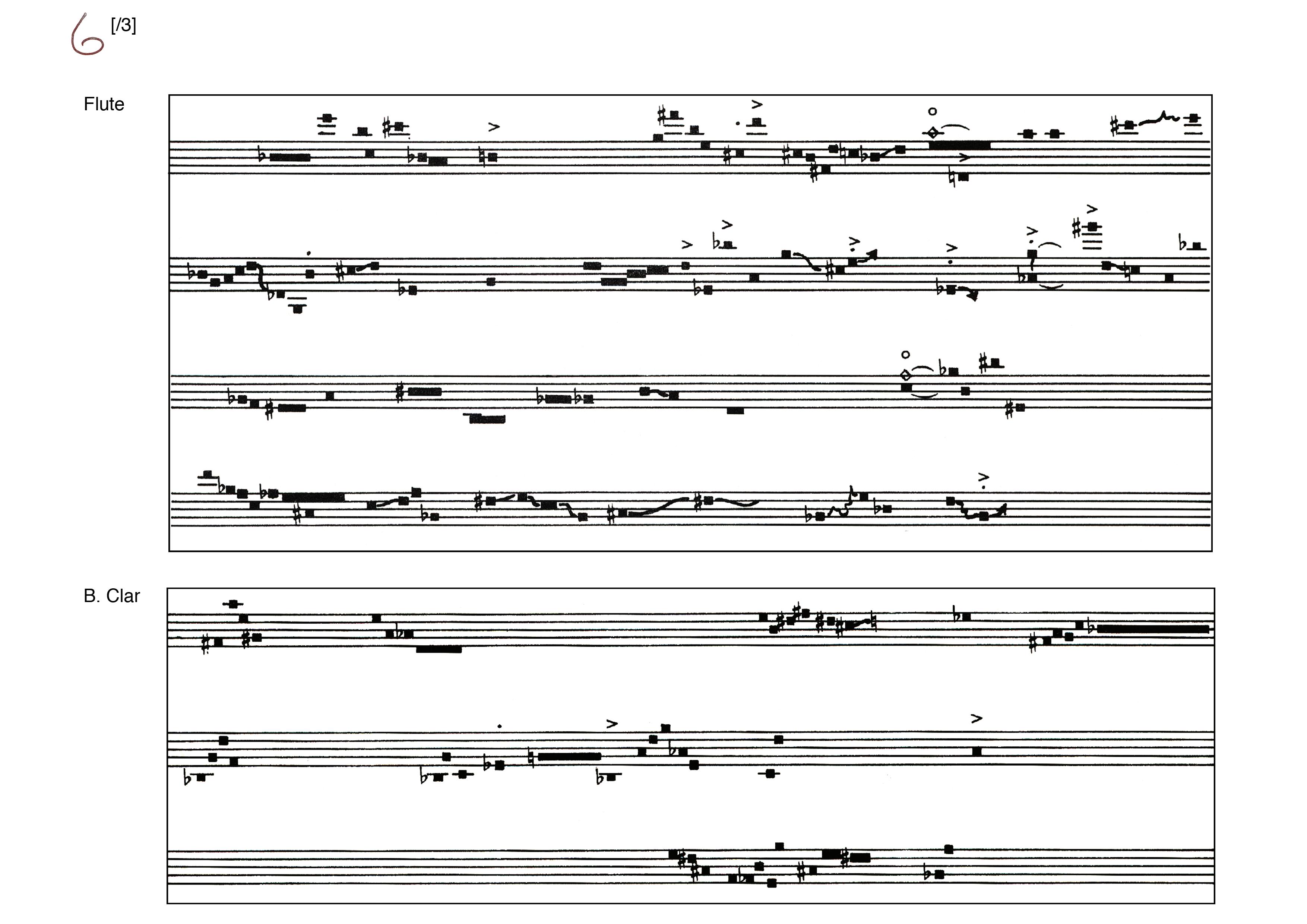

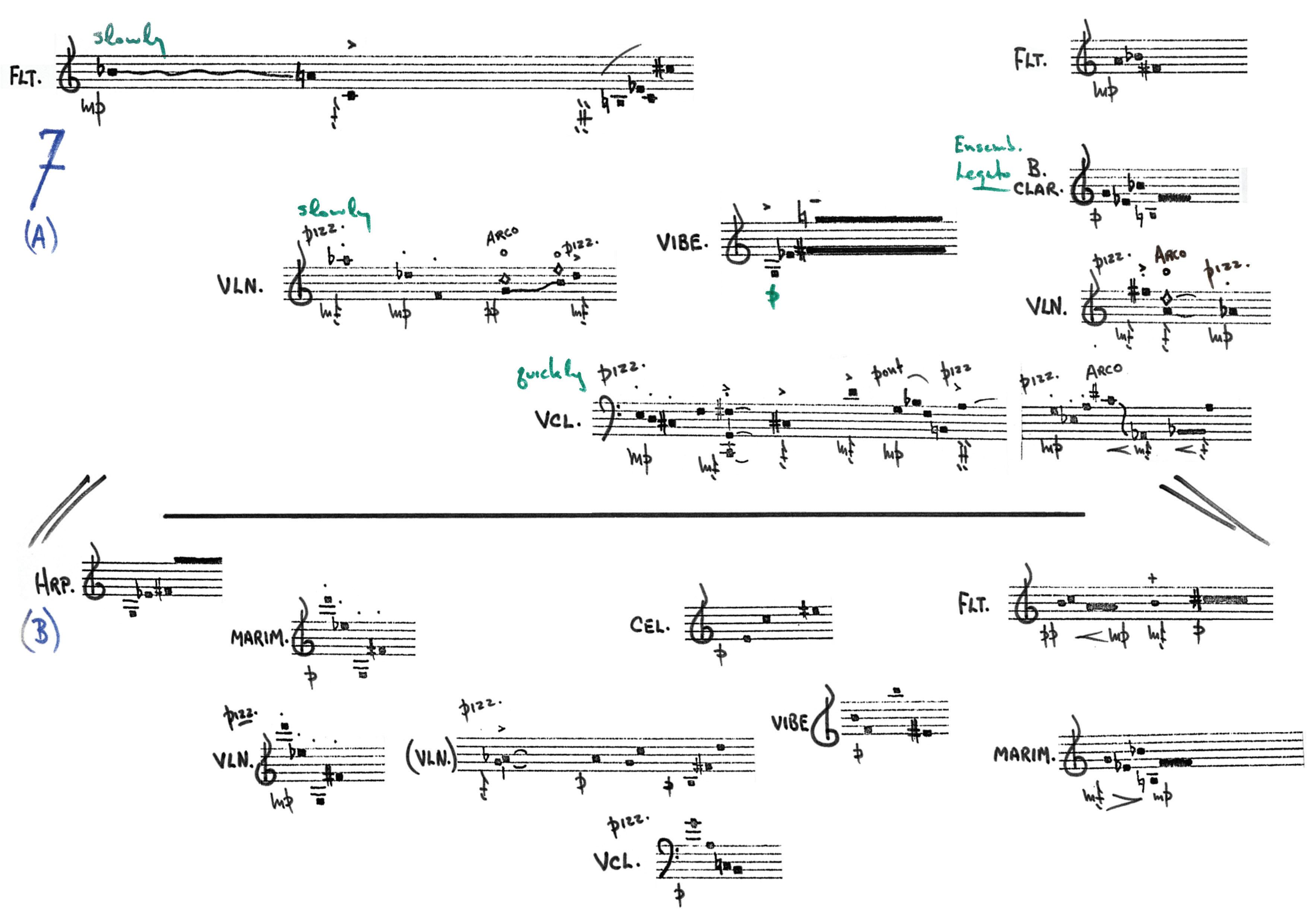
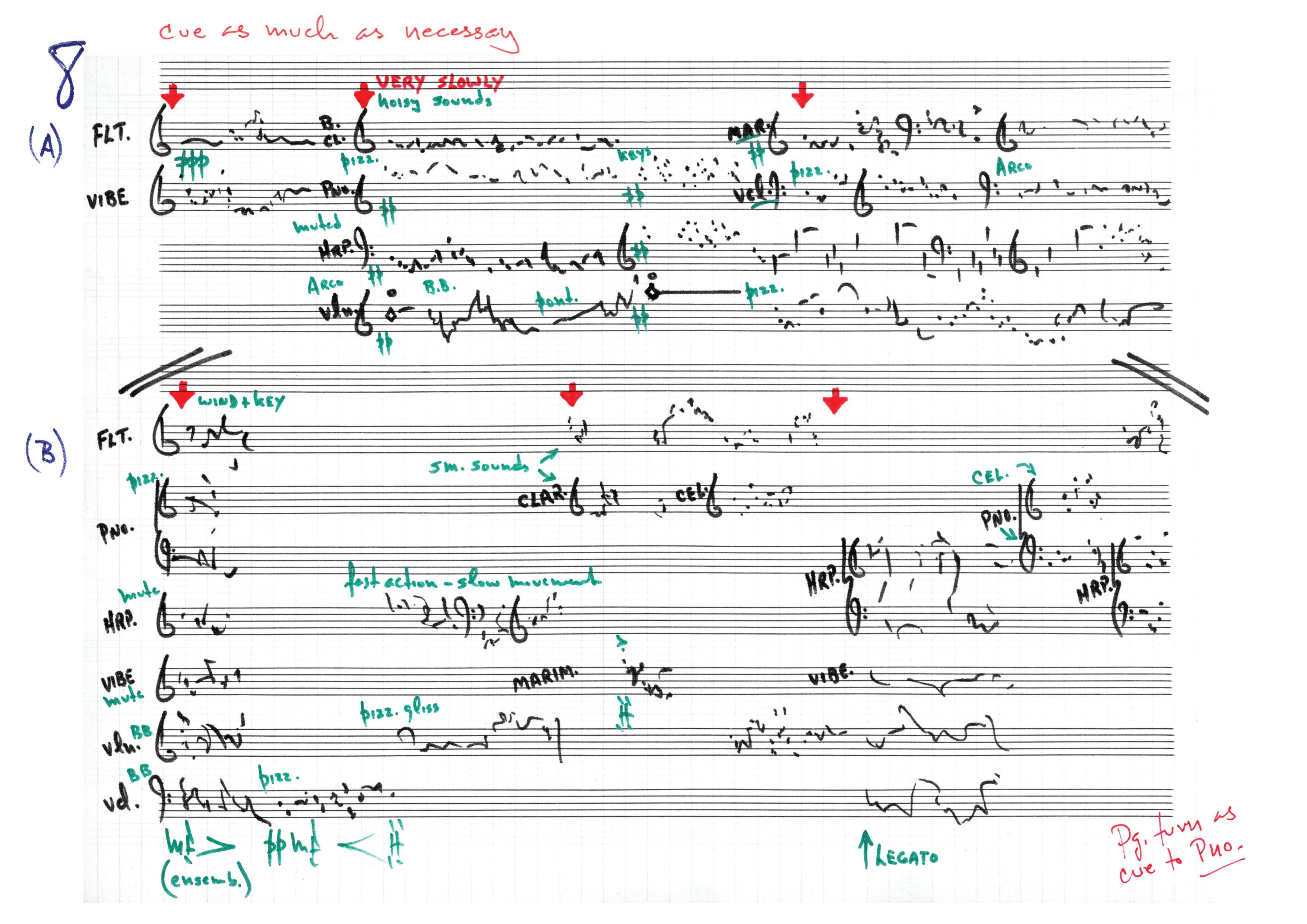
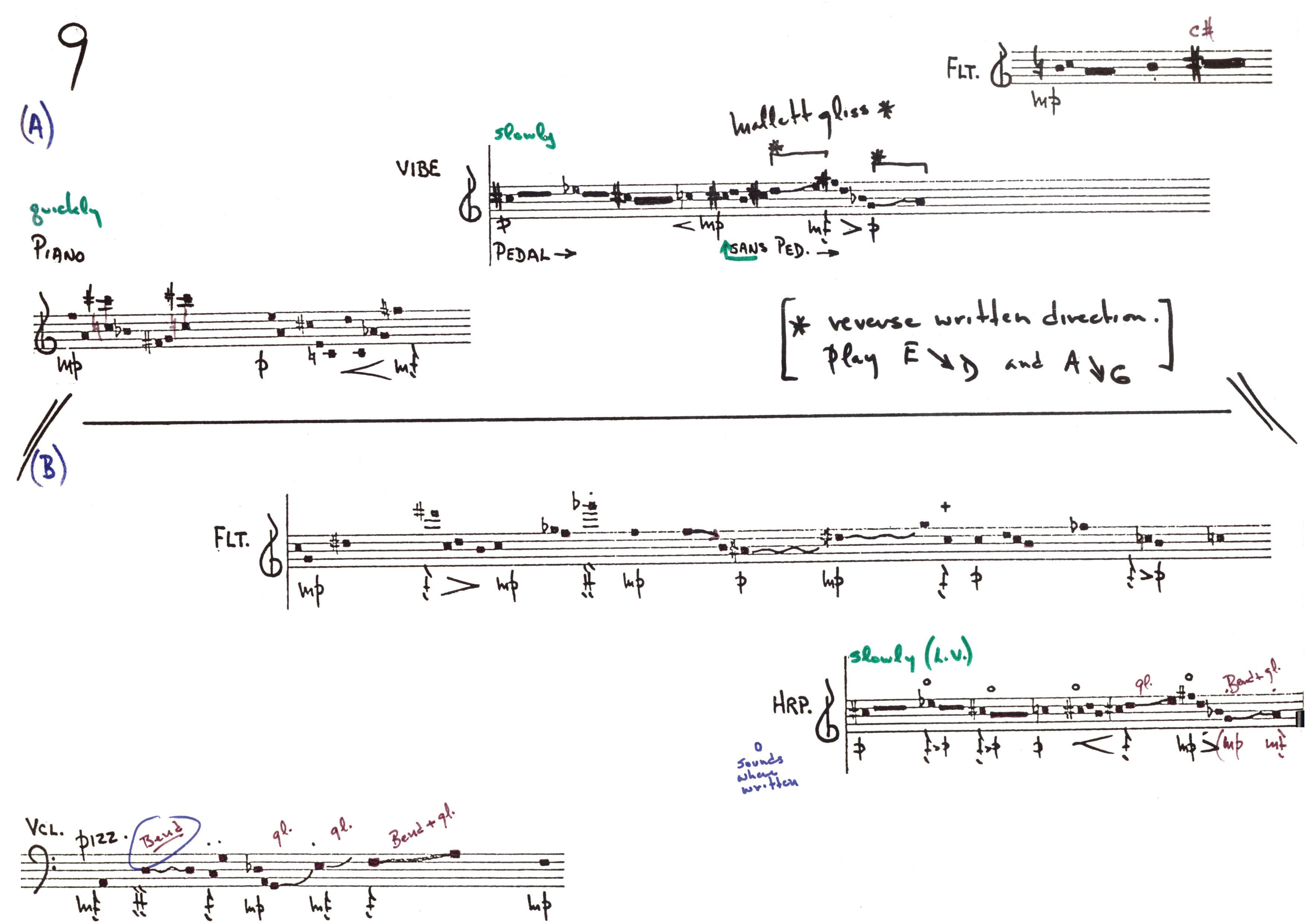
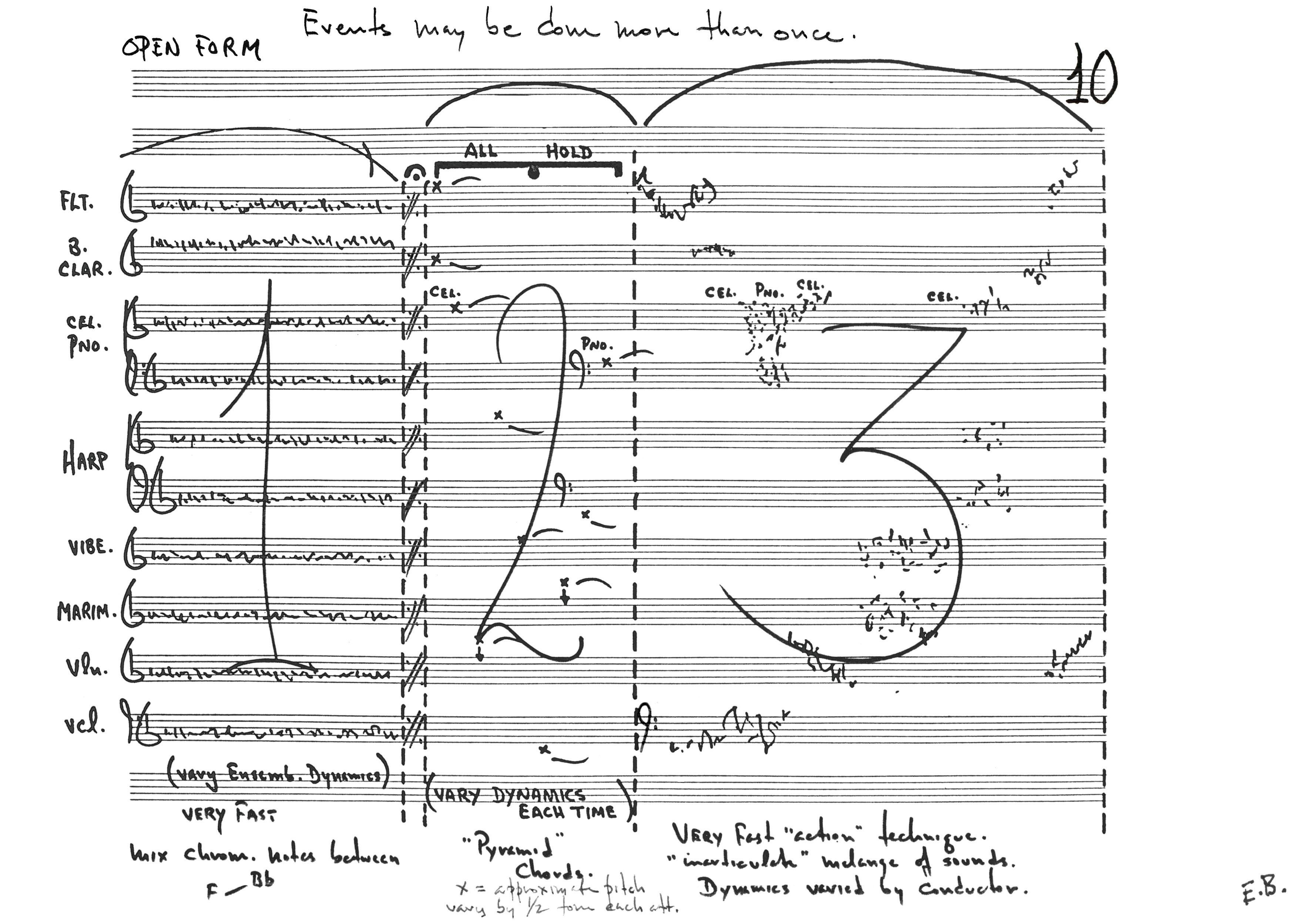
Earle Brown
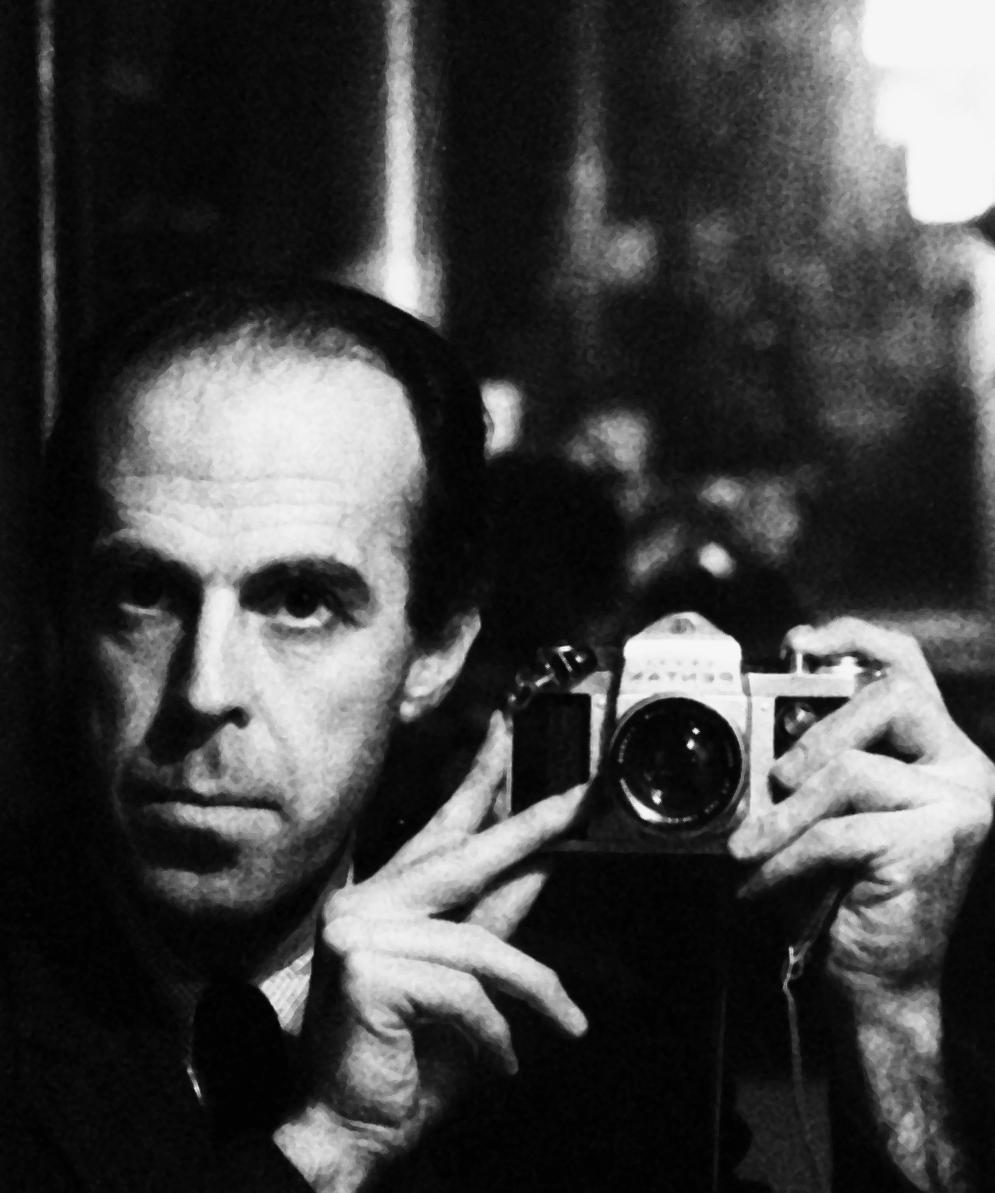
Earle Brown was born in 1926 in Lunenburg, Massachusetts, and in spirit remained a New Englander throughout his life. A major force in contemporary music and a leading composer of the American avantgarde since the 1950s, he was associated with the experimental composers John Cage, Morton Feldman and Christian Wolff, who – together with Brown – came to be known as members of the New York School. Brown died in 2002 at his home in Rye, New York.
Earle Brown wurde 1926 in Lunenburg, Massachusetts, geboren und blieb im Geist ein Leben lang Neuengländer. Ab den 1950er Jahren war er eine treibende Kraft in der zeitgenössischen Musik und einer der führenden Komponisten der amerikanischen Avantgarde. Enge Verbindung unterhielt er zu den experimentellen Komponisten John Cage, Morton Feldman und Christian Wolff, mit denen gemeinsam er später der sogenannten New York School zugerechnet wurde. Brown starb 2002 in seinem Haus in Rye, New York.
